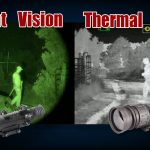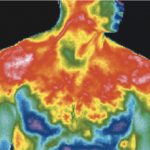A thermal imager is an infrared camera that can detect and measure the heat emitted by an object. This allows you to see in the dark, identify hot and cold spots, and find hidden objects.
Thermal imagers are used in a variety of applications, including security, search and rescue, building inspection, and industrial maintenance.
How does a thermal imager work?
Thermal imagers work by detecting the infrared radiation emitted by an object and converting it into an image. The amount of infrared radiation emitted by an object depends on its temperature.
Hotter objects emit more radiation than colder objects. This difference is what allows thermal imagers to see in the dark and identify hot and cold spots.
How thermal imagers are used in different industries?
Thermal imagers are used in a variety of industries for different purposes. Here are some examples:
– Security: Thermal imagers can be used to detect people in the dark or hidden places. They can also be used to find hot spots that may indicate a fire.
– Search and rescue: Thermal imagers can help find people who are lost or trapped, as well as identify hot spots that may indicate a fire.
– Building inspection: Thermal imagers can be used to find hidden leaks, moisture, and insulation problems in buildings.
– Industrial maintenance: Thermal imagers can be used to find hot spots on electrical equipment, which may indicate a potential problem.
The benefits of using a thermal imager
Thermal imagers offer a number of benefits over traditional cameras, including the ability to see in the dark, identify hot and cold spots, and find hidden objects.
In addition, thermal imagers can be used in a variety of industries for different purposes, making them a versatile tool for both professionals and consumers.
How to choose the right thermal imager for your needs
When choosing a thermal imager, there are a few things to consider, including:
– The type of application you will be using it for.
– The range you need. Thermal imagers are available in different ranges, from short-range to long-range.
– The resolution you need. Higher resolutions will provide better images, but they will also be more expensive.
– The size and weight of the unit. If you will be carrying it around with you, you’ll want to choose a unit that is small and lightweight.
Thermal imagers vs traditional cameras
Thermal imagers offer a number of advantages over traditional cameras, including the ability to see in the dark and identify hot and cold spots.
Traditional cameras rely on visible light to create an image, which means they can only be used during the day or in well-lit areas. Thermal imagers, on the other hand, can be used in any lighting conditions, making them a versatile tool for both professionals and consumers.
Thermal imagers are also more sensitive than traditional cameras, meaning they can detect smaller temperature differences. This makes them ideal for applications such as search and rescue, where every degree counts.
Finally, thermal imagers are not affected by glare or reflections like traditional cameras, making them perfect for use in environments where there is a lot of shiny surfaces or bright lights.



